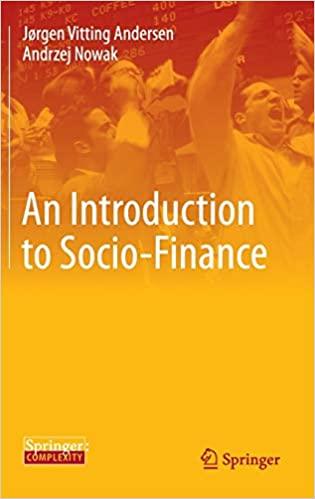The following are monthly percentage price changes for four market indexes: Compute the following. c. Covariance between the rates of retum for the following indexes. Use a minus sign to enter negative values, if any. Do not round intermediate calculations. Round your answers to six decimal ploces. Covariance (D)1A, S8. 500): Covariance (580500, Russell 2000): Covariance (S8P 500, Nikkei): Covariance (Russell 2000, Nikkei): d. The correlation coefficients for the same four combinations, Use a minus sign to enter negative values, if any. Do not round intermediate calcufations. Round your answers to four decimal places. Correlation (D)IA, Sap. 500): Correlation (S\&P 500, Russell 2000): Correlation (S8P 500, Nikkei): Correlation (Russell 2000, Nikkel): e. Using the unrounded answers from parts (a), (b), and (d), calculate the expected return and standard deviation of a portfollo consisting of tequal parts of (1) the 58P and the Russel 2000 and (2) the S8P and the Nikkel. Do not round intermediate calculations. Pound your answers to five decimal places. Expected return (S.) 500 and Russell 2000)t Standard deviation (58P 500 and Russell 2000): Expected return (SAP. 500 and Nikkei): Standard deviation (S8.P 500 and Nikkei): Since S8.P. 500 and Russell 2000 have a strong correlation, meaningful reduction in risk if they are combined Since 56s500 and Nikkei have a strong correlation, meaningful reduction in risk The following are monthly percentage price changes for four market indexes: Compute the following. c. Covariance between the rates of retum for the following indexes. Use a minus sign to enter negative values, if any. Do not round intermediate calculations. Round your answers to six decimal ploces. Covariance (D)1A, S8. 500): Covariance (580500, Russell 2000): Covariance (S8P 500, Nikkei): Covariance (Russell 2000, Nikkei): d. The correlation coefficients for the same four combinations, Use a minus sign to enter negative values, if any. Do not round intermediate calcufations. Round your answers to four decimal places. Correlation (D)IA, Sap. 500): Correlation (S\&P 500, Russell 2000): Correlation (S8P 500, Nikkei): Correlation (Russell 2000, Nikkel): e. Using the unrounded answers from parts (a), (b), and (d), calculate the expected return and standard deviation of a portfollo consisting of tequal parts of (1) the 58P and the Russel 2000 and (2) the S8P and the Nikkel. Do not round intermediate calculations. Pound your answers to five decimal places. Expected return (S.) 500 and Russell 2000)t Standard deviation (58P 500 and Russell 2000): Expected return (SAP. 500 and Nikkei): Standard deviation (S8.P 500 and Nikkei): Since S8.P. 500 and Russell 2000 have a strong correlation, meaningful reduction in risk if they are combined Since 56s500 and Nikkei have a strong correlation, meaningful reduction in risk








